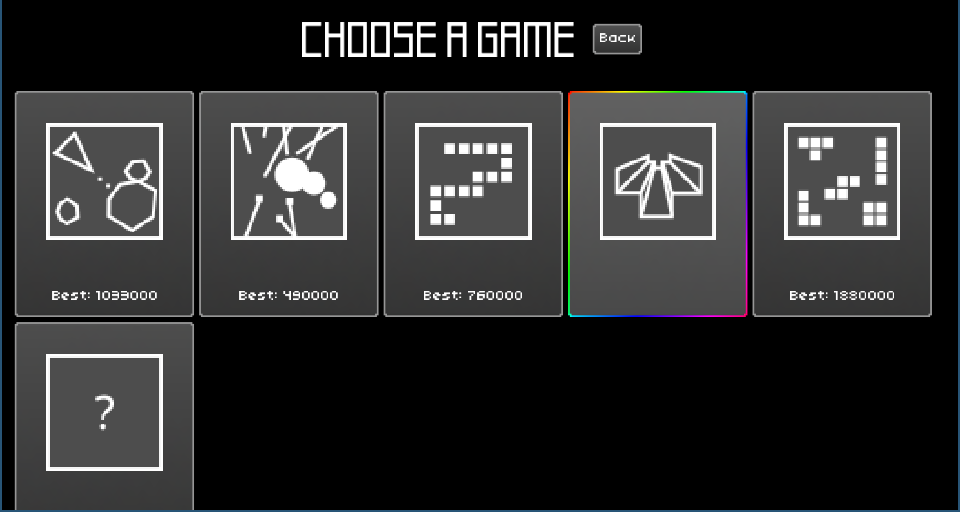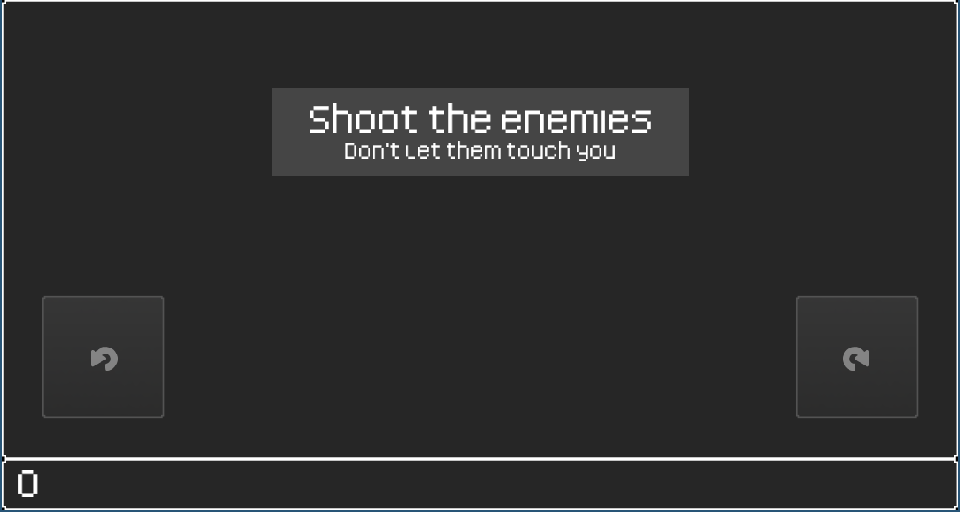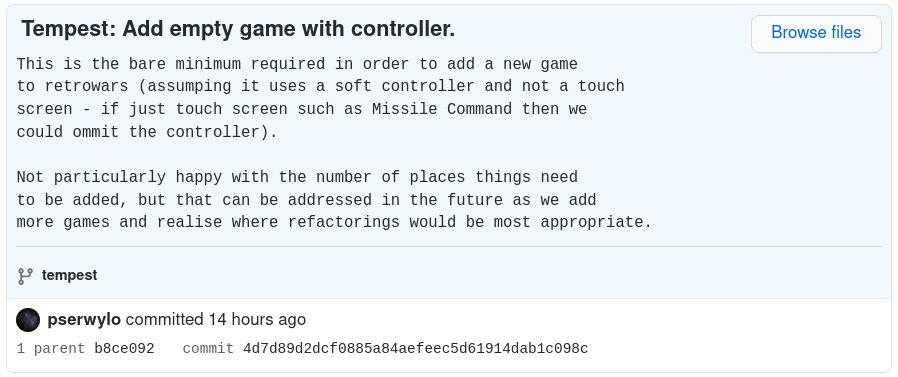Tempest: Initial skeleton
First steps: Adding a blank game skeleton #
Before getting into the specifics of Tempest, I thought I’d quickly review what is involved in adding a new game.
This can be seen in commit 4d7d89d2.
This is the minimum required to get to this point:


Code review of these changes #
I’m a big fan of code reviews. It is a wonderful way to mentor others, and an even better way to learn yourself. Although reviewing your own code kind of defeats the point, I hope that doing so in a public forum like this will let me be a bit more reflective, critical, and constructive.
First thoughts #
I don’t like the size of that commit.
Well, it isn’t so much the size, but rather the random locations with which code needs to be added. If it is non-obvious to myself as the original author, it does not bode well for others in the community attempting to implement games.
Here are some of the things I find odd and should perhaps refactor in the future…
Adding a controller #
Most games require a controller to be shown on screen. The steps to add a controller for Tempest are:
Adding an actor to OptionsScreen.kt
addActor(
IconButton(skin, Games.tempest.icon(sprites)) {
Gdx.app.postRunnable {
game.screen = ControllerSelectScreen(
game,
Games.tempest,
TempestSoftController.layouts,
) { index -> TempestSoftController(index, game.uiAssets) }
}
}
)
Why do we need to call addActor on OptionsScreen? Why do we need to create a button? Why do we need to hard code a reference to Games.tempest twice and TempestSoftController twice? Why does every game that wants to have a controller need to call Gdx.app.postRunnable { game.screen = ControllerSelectScreen(...) }?
Create a controller and manually add to HUD in TempestGameScreen
private val controller = TempestSoftController(Options.getSoftController(Games.tempest), game.uiAssets)
init {
addGameOverlayToHUD(controller.getActor())
}
Proposed improvement
The base GameScreen base class should have an open function which optionally returns a controller:
open fun getController(): SoftController? = null
The OptionsScreen can then query the (already present) list of Games.allSupported (which we had to populate as part of the initial game adding process) and ask each one for a controller.
Those that return a controller will end up with an entry in the options screen.
The GameScreen can then use the fact that a controller exists to decide whether or not to add one to the HUD instead of relying on the base class to have to call addGameOverlayToHUD(controller.getActor()) at some point.
This may require refactoring the SoftController class hierarchy so that it can be created and queried without having to instantiate an actor or specify which controller layout to use.
That is to say, the options screen should be able to know that a game has a controller without having to create a specific instantiation of one.
Displaying a message at the start of the game #
Call showMessage() during init
init {
showMessage("Shoot the enemies", "Don't let them touch you")
}
This is easy to do, and only needs a single line to be added. However, people adding new games have to remember to do this.
Proposed improvement
Force the implementing game to provide these messages to the constructor. That way, the compiler will tell the game designer that these are required pieces of information to make the game behave like all other games.
Next steps #
I will have a go at implementing the proposed feedback prior to starting Tempest properly. Hopefully it shouldn’t take too long and then we can progress with getting the next game done.
